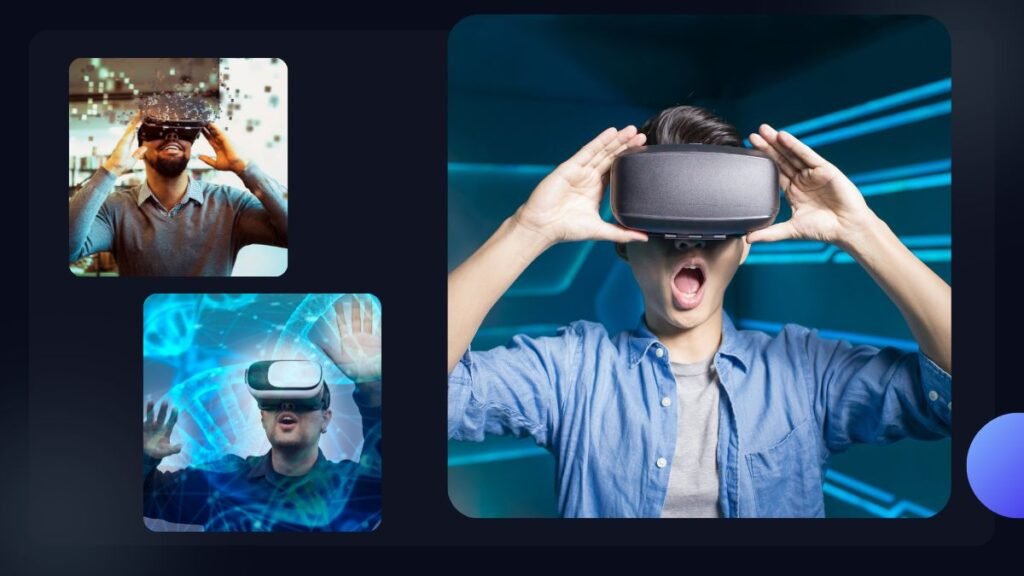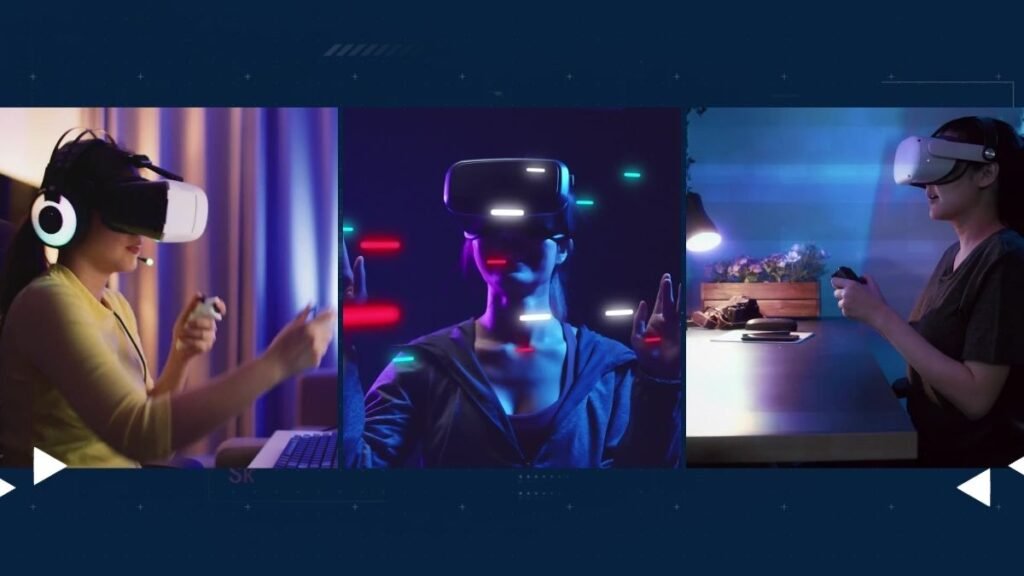We are living in a digital world, and virtual reality is becoming an increasingly popular way to interact with it. Virtual Reality (VR) has been around since the late 1980s, but now we’re seeing an explosion of new applications in gaming, entertainment, education, and more. With technology advancing so quickly and consumers demanding ever-more immersive experiences, this decade holds great promise for VR innovation and adoption. In this post, we take a look at the top trends in virtual reality that you should watch as they continue to revolutionize our lives over the next ten years. So buckle up because what lies ahead promises to be both exciting and revolutionary.
What is Virtual Reality?
Virtual Reality (VR) is an emerging technology that creates immersive, computer-generated environments which allow users to interact with objects in a simulated environment. VR can be used for many different applications such as gaming, education, virtual tourism, engineering design, and diagnosis and treatment of mental health issues, among other uses. Virtual reality utilizes headsets and motion-sensing controllers to make the user feel as though they are in the simulated environment. The goal of VR is to create a realistic experience that feels real and immerses the user in the virtual world. It can be used for entertainment, training, research and analysis, architectural design, engineering and manufacturing designs, medical examination and treatment, simulation, and more.
Top Virtual Reality (VR) Trends for 2023
In recent years, Virtual Reality (VR) technology has grown exponentially, with advancements in the sector rapidly evolving for use across a range of industries. VR is now being used to train astronauts, teach medical students, and even explore ancient cities from the comfort of a virtual world. Here are the top virtual reality trends we will see in 2023 and beyond.

1. VR will become more realistic and lifelike, with better graphics and sound
As virtual reality technology continues to develop, users will experience increasingly realistic and lifelike worlds. Better graphics, sound, and motion-tracking capabilities will make these environments easier to explore and navigate. Virtual reality games are set to become even more immersive as developers can take advantage of these technological advancements. Not only will gaming be enhanced, but the potential applications of virtual reality are endless. From medical simulations to architectural designs, virtual reality can be used as a powerful tool for exploring and understanding the world around us in a completely new way. With this technology continuing to progress, imagining what possibilities may lie ahead is exciting.
2. More businesses will start using VR to train employees and test products
Virtual Reality (VR) is becoming a popular tool for businesses in various industries. With the help of VR, a business can create realistic simulations and environments that can be used to train employees, test products, and more. Companies have already begun using VR to prepare their employees for difficult situations they may encounter while on the job or even in their daily lives. For example, in the medical field, VR can be used to simulate operating rooms or stressful medical scenarios that doctors may encounter. Businesses are also using VR to test out new products and services before launching them into the market.
3. VR will be used more for marketing and advertising purposes
Virtual reality (VR) is a rapidly growing technology that has the potential to revolutionize various industries, including marketing and advertising. Innovative technologies and new ideas have always driven these industries, and VR presents an unprecedented opportunity in this regard. Thanks to its immersive visual capabilities, companies can create unique experiences for their customers that are not possible with traditional marketing approaches. For instance, VR can enable customers to virtually explore a product or service before purchasing it, providing them with an in-depth understanding of its features and benefits.
4. The gaming industry will continue to grow, thanks to VR technology
The gaming industry has experienced incredible growth over the past few decades, and this trend is only likely to continue. One of the major factors driving this growth is the development of virtual reality technology or VR. This revolutionary technology allows gamers to experience a whole new level of immersion in their favorite games, with incredibly lifelike visuals and sound that make the game world feel more real than ever before. VR is quickly becoming an integral part of the gaming industry and is sure to propel it to even greater heights in the years ahead. With a wealth of new possibilities at their fingertips, gamers can look forward to exciting and immersive gaming experiences that are unlike anything they have experienced before.

5. Movies and TV shows will be produced in VR format
VR is revolutionizing the way movies and TV shows are created. With this technology, viewers can become fully immersed in an interactive cinematic experience with no boundaries between them and the story. This allows for a more personal connection to the characters, plotlines, and themes of any film or show. The potential for storytelling will be pushed to its limits with this new technology, and audiences will be able to explore the narrative in a way never before possible. Additionally, the use of VR in movies and TV shows opens up opportunities for unprecedented audience engagement. Producers can create interactive experiences that bring fans closer than ever to the stories they love by allowing viewers to engage with their favorite characters and settings directly.
6. Social media platforms will incorporate VR features
As virtual reality (VR) continues to evolve as a popular technology, social media platforms are beginning to incorporate VR features into their services. This is an attempt to bring the user experience closer together in a way that’s never been done before. For example, Facebook recently launched its Oculus-based headset that lets users explore the world of VR without having to leave their couches. With more platforms likely to follow suit, it looks like VR is set to become a major player in the world of social media. With VR, users can now be fully immersed in an experience that feels just as real as if they were there physically. This will enable them to connect with their friends in a way that’s more authentic than ever before. It also opens up a whole new world of possibilities for content creators to explore, from interactive games to educational experiences and beyond.
Conclusion
The full effects of VR’s potential are yet to be seen, but the industry is growing at an unprecedented rate. With the development in motion tracking, processor power, and AI, we can only imagine what will be possible with this technology in the next decade. We’re excited to see how these trends continue to shape the future of virtual reality.


